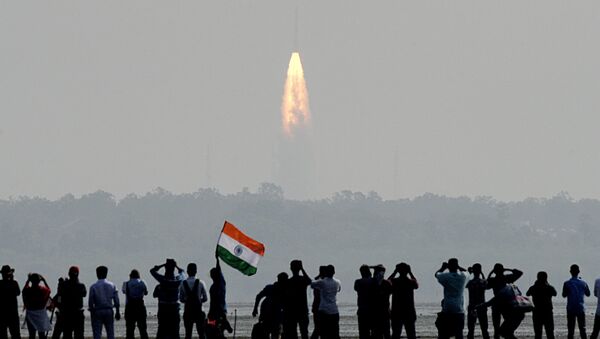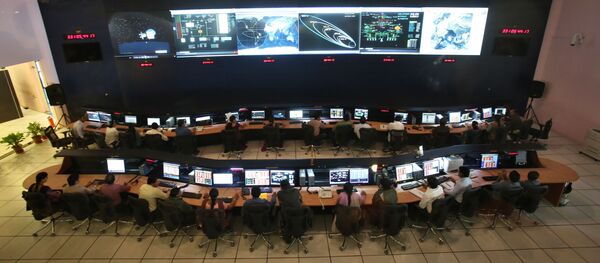New Delhi (Sputnik) — Moving a step forward in its plan towards launching a manned spacecraft in the near future, the Indian Space Research Organisation (ISRO) on Thursday successfully tested the Crew Escape System for its experimental capsule simulating an emergency pad abort situation.
READ MORE: Fund Crisis Involving India's Strategically Crucial Space Programs Disappears
"ISRO carried out a major technology demonstration today (July 05, 2018), the first in a series of tests to qualify a Crew Escape System, which is a critical technology relevant for human spaceflight," ISRO said in a statement.
— ✈Anantha Krishnan M✈ (@writetake) July 5, 2018
"The test was over in 259 seconds, during which the Crew Escape System along with crew module soared skyward, then arced out over the Bay of Bengal and floated back to Earth under its parachutes about 2.9 km from Sriharikota," ISRO added.
— Vijainder K Thakur (@vkthakur) July 5, 2018
The ISRO employed nearly 300 sensors to record various mission performance parameters during the test flight. Three recovery boats are being used to retrieve the module as part of the recovery protocol.
On 18 December 2014, the ISRO conducted the most high-profile test of the project, named Crew Module Atmospheric Re-entry Experiment (CARE), wherein the crew module was separated from the launch vehicle at an altitude of 126 km, re-entered the earth's atmosphere at about 80 km and descended further in ballistic mode. The external configuration of the crew module was the same as that of a manned flight.
READ MORE: Indian Court Reopens ISRO Espionage Case; Compensates Acquitted Scientist
The ISRO's former scientists were of the opinion that the space agency should prepare for a manned mission, as the country should aspire to bring resources like Helium from space. The Chandrayan-2 (Moon Mission-2), which is scheduled to be launched in October this year, will explore the south side of the moon to find traces of water and Helium-3, an isotope crucial for the development of fusion energy on earth.




